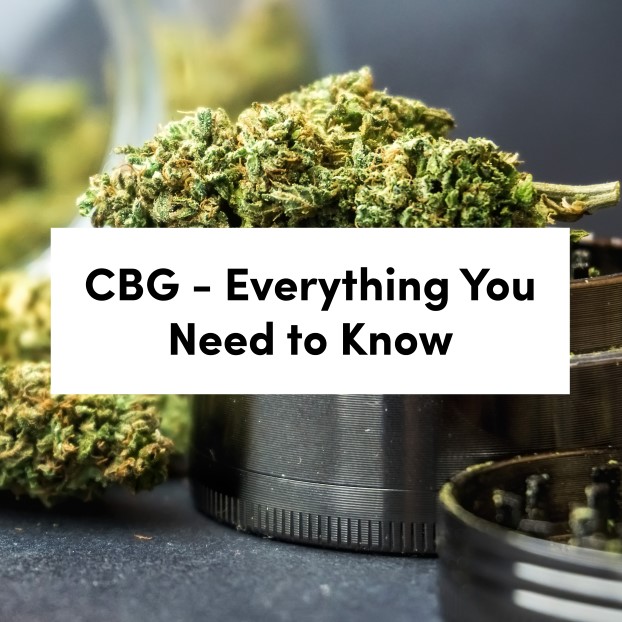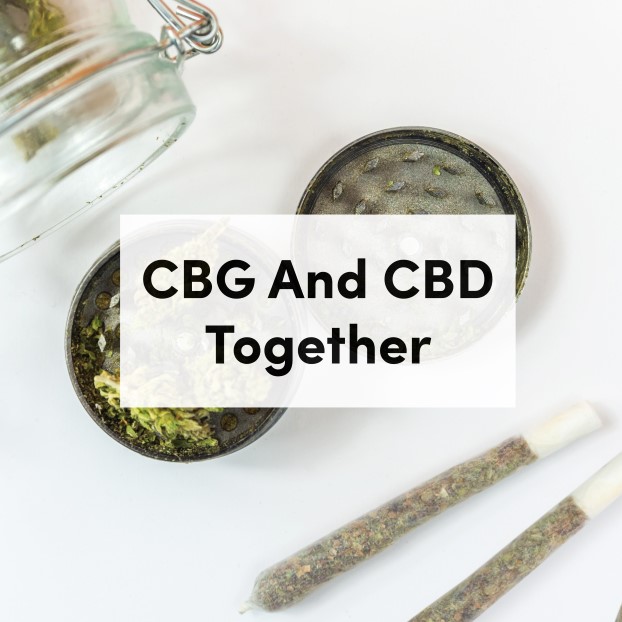What Is CBG and How Can I Use It?
Posted on July 20th, 2021
CBD has been getting extensive attention in recent years due to the health benefits it offers, but now there’s a new compound that’s getting buzz: CBG. What is CBG? Where does it come from? And why are we all talking about it? Read on to get answers to all these questions. (And a few more we haven’t even asked yet!)
What Is CBG? 
Also called Cannabigerol, it’s a compound derived from cannabis plants. It is a minor cannabinoid that is only found in low concentrations in most strains of cannabis. Similarly to CBD, this compound influences CB1 and CB2 receptors in the body. But it doesn’t have the psychoactive properties associated with THC.
We also say it’s a precursor to all cannabinoids. CBGA is plentiful in cannabis plants, but it breaks down when exposed to heat, forming many other compounds, including CBDa and THCa, which then break down into CBD and THC. In most plants, this cannabinoid represents just 1% of a plant’s total mass. And that’s why we call it one of the rarer cannabinoids.
How is it Different from CBD?
Although both are cannabinoids that influence your endocannabinoid system, they display key differences. Researchers believe that CBD primarily interacts with CB1 and CB2 receptors on an indirect basis. In contrast, it seems that CBG interacts with these receptors directly.
Since the compound appears to be more potent than CBD, it could have more dramatic effects. Researchers are currently investigating how it interacts with various physiological systems in order to gain a better understanding of how it could be used medicinally.
Another key difference? These compounds show up in very different quantities. As mentioned previously, CBG is typically just 1% of a cannabis plant. And that can make it difficult to extract this compound. In contrast, a single hemp plant can typically produce a full pound of CBD oil.
How Do We Produce this Cannabinoid?
CBG’s rarity has been a barrier to its adoption. But recent advances have made it possible to increase yields. Crossbreeding plants have created cannabis strains with significantly higher percentages. Experts have also found that we gain quantities when harvesting plants at week six in an eight week growing cycle.
In some cases, CBG is also used in conjunction with other compounds, particularly CBD. Since these compounds are fairly similar in composition, they can be used together with very few issues. In fact, using them together may actually enhance their individual effectiveness. (We also call this the entourage effect.)
We extract the cannabinoid via a process that utilizes a solvent, such as ethanol or CO2. When you place the plant in your selected solution, we can draw out the cannabinoids along with terpenes. We then use heat to evaporate the solution. Then, once the process is complete, you’re left with pure CBG concentrate.
What Are the Benefits of CBG?
The endocannabinoid system maintains stability throughout the body. Since it appears that CBG is able to have a direct influence on endocannabinoid receptors, it may be an effective way to treat medical conditions and improve health and well-being.
The current research on CBG is still limited, but current data suggests that it is especially effective at reducing oxidative stress in the body. Not only do high oxidative stress levels accelerate the aging process, but it can increase the risk of many diseases, including heart disease, diabetes, and cancer. CBG could be a way to counteract that.
Can it help manage any conditions? 
Scientists still have a great deal to learn about CBG. Its rarity has made research more difficult. Although the cannabinoid shows a great deal of medical promise, its not yet used as an approved medical treatment.
Experts have taken a closer look at CBG’s potential for use in glaucoma therapy. One study found it relieved intraocular pressure in glaucoma patients, which could greatly reduce the severity of symptoms. (1) However, these reports do suggest that the cannabinoid would be more effective if used alongside other treatments.
Reports also show that CBG could help manage irritable bowel disease. IBD can cause many debilitating symptoms in patients, including abdominal pain, nausea, and diarrhea. According to studies, this cannabinoid could reduce the severity and frequency of all of these symptoms. (2)
Researching this cannabinoid could also help us treat neurodegenerative diseases. One study that looked at the impact of CBG on mice with Huntington’s Disease found that CBG could have neuroprotective properties. (3) After CBG was administered to the mice, abnormal genes linked to brain degeneration were normalized. Studies involving mice with Parkinsons’ Disease were also very promising. (4)
CBG also shows promise as a pain reliever, an antianxiety treatment, and even as an antibiotic. The similarities between CBG and CBD mean that these two compounds are likely to be used as a treatment for the same condition. In many cases, CBG and CBG will be used together. With that said, research suggests that CBG may also offer unique benefits.
What Kinds of CBG Products Are Available?
Despite having few available CBG products, your primary delivery methods are still similar to those familiar CBD options. CBG oil, which allows for both oral and sublingual delivery, is one of the most popular types of products. You can also find edibles, such as CBG gummies, topicals products, and even flowers with the cannabinoid.
Many oils take full advantage of the entourage effect, containing terpenes that may improve the overall product benefits. As mentioned previously, it’s very common to see products that contain both CBD and CBG, with 2:1 and 3:1 ratios being particularly common.
While its a rare cannabinoid, and since growers are still finding ways to increase production, CBG products tend to come at a higher cost than similar products containing CBD. When production methods improve, it’s likely that costs will decline, and we’ll see more product variety in the market.
What Does the Future Hold for this Cannabinoid?
Research on CBG has shown that it may have a stronger effect on the endocannabinoid system than either CBD or THC. Although CBG can provide many of the same benefits that CBD offers, it also appears that it may have additional health benefits. These factors suggest that CBG could see a surge of popularity as time goes on.
At the present, however, there are a number of factors holding us back. Our current CBD research is encouraging, but it’s also extremely limited. As researchers continue to evaluate this cannabinoid, it’s likely that it will be more widely adopted as a treatment or recreational product.
Cost and availability limit our market right now. Some growers have successfully produced strains that provide higher CBD yields, but it is still far more difficult to harvest CBG. But, as availability improves, prices will drop, and the variety of products on the market will increase. In the meantime, you can enjoy small quantities in a full-spectrum CBD product. So come shop our online CBD store and find your choice of delivery methods and product doses!
1. https://pubmed.ncbi.nlm.nih.gov/1965836/
2. https://pubmed.ncbi.nlm.nih.gov/23415610/
3. https://pubmed.ncbi.nlm.nih.gov/25252936/
4. https://pubmed.ncbi.nlm.nih.gov/29338785/




